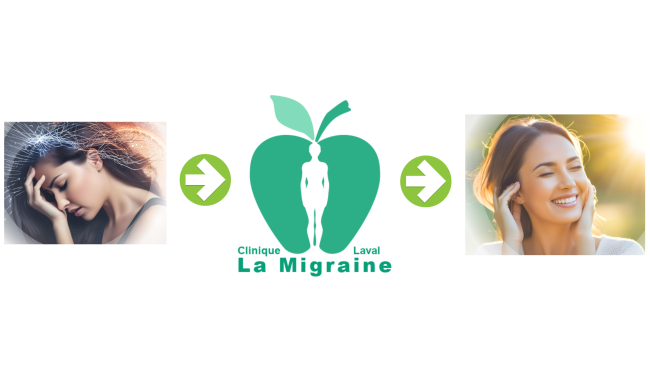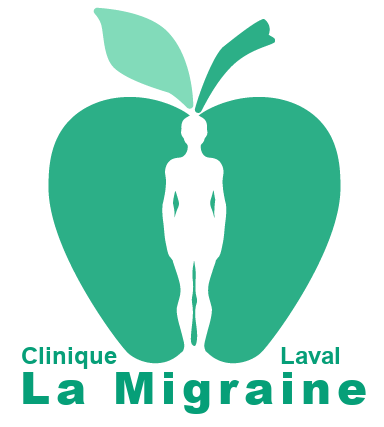We fully understand what you are going through: Finally relieve your cervicogenic headaches.
Cervicogenic headaches are far more than just a typical headache. Persistent pain originating from the neck, cervical stiffness, discomfort radiating to the back of the head or even to the temples—these symptoms can restrict your daily activities and affect your overall well-being. We understand how frustrating and unsettling this pain can be, both physically and emotionally.
At the Clinic La Migraine, we have spent over twenty years studying and treating various types of headaches, including cervicogenic headaches. We understand their origins, triggers, and the impact they have on your life. Our personalized, drug-free approach is designed to alleviate your pain and sustainably improve your quality of life.
>Tangible Solutions, Proven Results
Reduction of over 70% in the intensity, frequency, or duration of episodes in the greater majority of our patients.
Personalized approaches tailored to your history and lifestyle.
Over 20 years of proven expertise in treating chronic, hormonal, vestibular migraines, and more.
>A team that understands and supports you.
- Attentive listening to your unique situation and needs.
- Treatment plans tailored to your progress, continuously reviewed for optimal effectiveness.
- Compassionate care with Dr. Daniel Lachance, chiropractor, to help you take control of your life again.
>Don’t let headaches control your days any longer.
You deserve to regain serenity and freedom. Contact us today to schedule an appointment and discover how our methods can alleviate your cervicogenic headaches… or even make them disappear.
Contact us now or call 450-689-1223.
Life is too short to spend it in pain. Don’t wait any longer: you have the right to live fully.
Cervicogenic Headache: Causes, Symptoms, and Diagnosis
What is a cervicogenic headache?
Cervicogenic headache is a type of headache that originates in the cervical region, meaning the neck. It is caused by dysfunctions in the cervical structures, such as the joints, muscles, or nerves. These issues can result from poor posture, trauma like whiplash, or excessive strain on the neck, often related to activities that require prolonged static positions, such as working in front of a computer. This condition primarily affects active adults and appears to be more common in women. The pain may worsen with certain positions or movements, and although it is not classified as a migraine, it can cause nausea in some cases.
A Few Causes
Cervicogenic headaches can be triggered by various conditions affecting the structures of the neck, such as:
- Muscle tension
- Injuries or trauma (car accident, whiplash, fall, etc.)
- Structural abnormalities
- Cervical osteoarthritis
- Cervical hernia
- Prolongued bad posture
- Repetitive movements of the head and neck
The Symptoms
The standard symptoms of a cervicogenic headache are:
- Unilateral pain, generally on the same side of the head
- Pain radiating from the neck to the head, temples, or eyes
- Dull, non-pulsating pain
- Pain aggravated by certain neck movements or postures
- Variable duration of pain episodes
Other symptoms may also be present:
- Muscle tension sensation in the neck
- Reduced range of motion in the neck
- Nausea and vomiting (in some cases)
- Dizziness
- Blurred vision
- Sensitivity to light and noise
*It is important to note that these symptoms can vary from person to person, and the presence of tender points at the base of the occipital region is often observed during the clinical examination.
Cervicogenic headaches are distinct from migraines and tension headaches, although their symptoms may sometimes overlap.
According to the ICHD-3, a cervicogenic headache is defined as a “headache caused by a disorder of the cervical spine and its bony, discal, and/or soft tissue components, typically, but not invariably, accompanied by neck pain.”
Diagnostic criteria:
A. Any headache that meets criterion C
B. Clinical and/or imaging evidence of a disorder or lesion in the cervical spine or soft tissues of the neck, known to cause headaches
C. Causative link demonstrated by at least two of the following elements:
1. The headache developed in temporal relation to the onset of the cervical disorder or the appearance of the lesion
2. The headache significantly improved or resolved along with the improvement or resolution of the cervical disorder or lesion
3. The range of cervical motion is reduced, and the headache is significantly worsened by provocative maneuvers
4. The headache disappears after diagnostic blockade of the cervical structure or its innervation
D. It is not better explained by another diagnosis from the ICHD-3
Source:
ICHD-3
Bellavance, André. “Les Céphalées d’Origine Cervicale: Laisser Sortir les Démons.” Le Médecin du Québec, 37 (4), 2002. 113-121.
FSMQ. Dossier Santé: Migraine, Maux de Tête et Céphalées. 2025. https://fmsq.org/fr/dossiers-sante/migraine-maux-de-tete-et-cephalees
Contact Form– We’re accepting new patients
We would be delighted to assist you and discuss your migraines. No referral is necessary. Simply fill out this form and submit it, and we will get in touch with you.
You are on the right path to your first consultation and relief from migraines!
Or call us:

